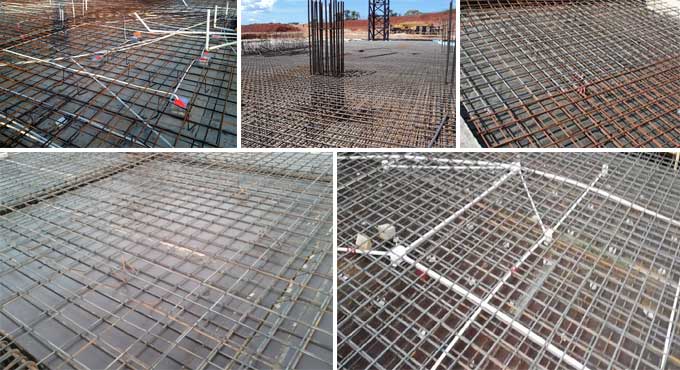NEWS | SOFTWARE | SHEET
The Complete Checklist for Concrete Slab while Casting Process
There are three primary components to any construction project: the client, the contractor, and the consultant. Three companies will undertake the project review to raise the building's degree of excellence. If the project is minor at the moment, the clients will manage the procurement, etc., themselves. The slide test list assists in minimizing the inaccuracy of constructing and enhancing project quality.
In the construction of a reinforced concrete floor, a continuous slab is used to define the major and planar support surfaces.
It is a right angle grid of folds that consists of one beam defining a path across the planar supporting surface of the continuous slab and is folded at least one beam defining a path across the slab's planar supporting surface, as well as downward peripheral folds on the slab edges and downward V-sectioned folds that interrupt the major and planar supporting surface.
What are the importance of slabs?
The slab is an extremely crucial structural component that plays a crucial role in the construction of flat, practical surfaces such as floors, roofs, and ceilings in any building. This horizontal structural element has parallel top and bottom surfaces, or surfaces that are nearly parallel to each other, on both sides.
What do you mean by the casting of concrete?
The casting of concrete is a method of constructing buildings in which walls and slabs of buildings are cast in formwork at the construction site before they are assembled.
It is a very different form of concrete technology from precast concrete, in which slabs are cast elsewhere and are then brought to the construction site and assembled there.
Its walls are made of concrete slabs instead of bricks or wooden panels, and both the walls and the roof are made using formwork.
The checklist required for a concrete slab
The following is a list of the concrete slab checklist:
- When putting up the cover blocks, make sure that they are in the right position and remain in place throughout the entire process.
- During and after the concrete is poured, it should be ensured that one carpenter is always present under the shuttering slab to verify that it is supported well and will remain constant during and after the concrete is poured.
- It is very important to handle the concrete batching, water content, mixing and testing of freshly prepared concrete with great care if the concrete is prepared on site.
- You should never allow concrete slabs to be finished with an extremely smooth finish.
- The beams should be cast primarily in layers and should be compacted properly with vibratory machines so that they are cast in layers.
- In order to minimize the displacement of steel reinforcement, it is necessary to have the presence of a bar bender.
- As a precaution when concreting in hot weather, the concrete surface should be covered with wet gunny bags at least for the first 4 to 5 hours of the concreting process.
- If you do not allow the sprinkling of dry cement on the concrete during its finish, then you will be able to prevent micro cracks from forming as a result of shrinkage cracks.
- During concreting, make sure that the chairs are placed appropriately to prevent a disturbance at the top reinforcement bars.
- It is a wise idea to put a cover of tarpaulin over the slab if the weather is wet, windy, or extremely hot while you are laying the concrete. In this way, the slab will be protected against any damage that may occur.
- Make sure that the casting slab does not have any cold joints.
- Concrete slabs should not be dried too quickly if they want to avoid plastic shrinkage cracks caused by shrinkage in the slab.
- Ensure that the concrete has been fully compacted and that it has been finished completely.
How is a Slab Checked before Casting?
In case of power failure, make sure that the standby arrangements have been made to supply water to the building.
Before choosing the location of the concrete joints in the case of a large slab, ask your RCC specialist. Before casting, make sure the beam is free of any wooden fragments, paper, nails, etc.
To get more clear ideas, go through the following exclusive construction video tutorial.
Lecturer: Civil Site visit
Recommended Articles:
Making of Slabs on Ground - Design Thoughts According To American Concrete Institute (ACI) and American Society for Testing and Materials (ASTM)


